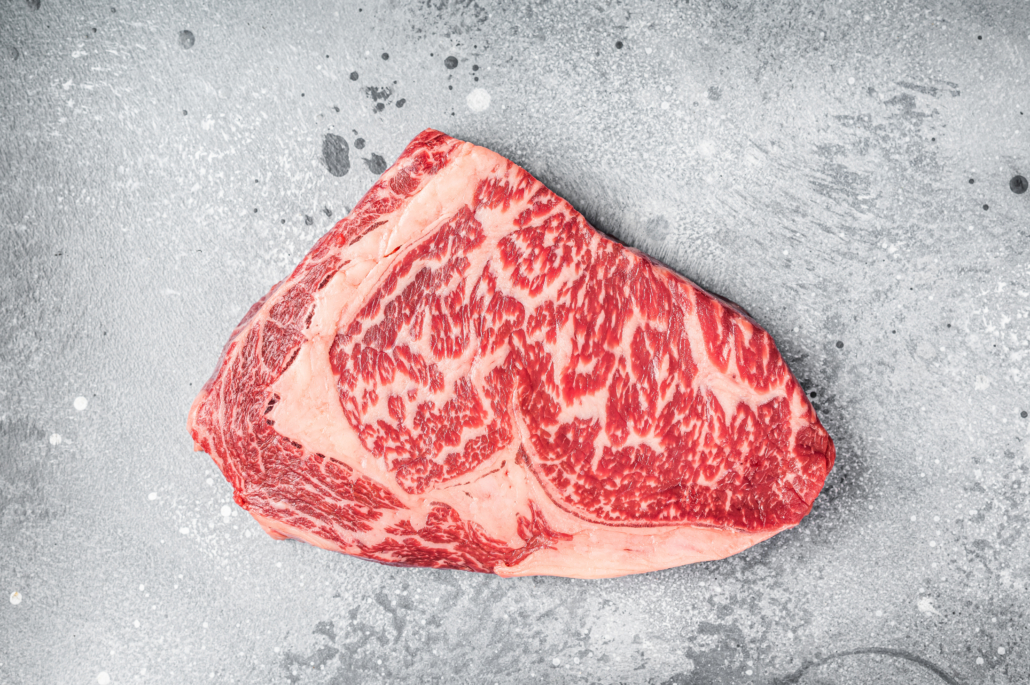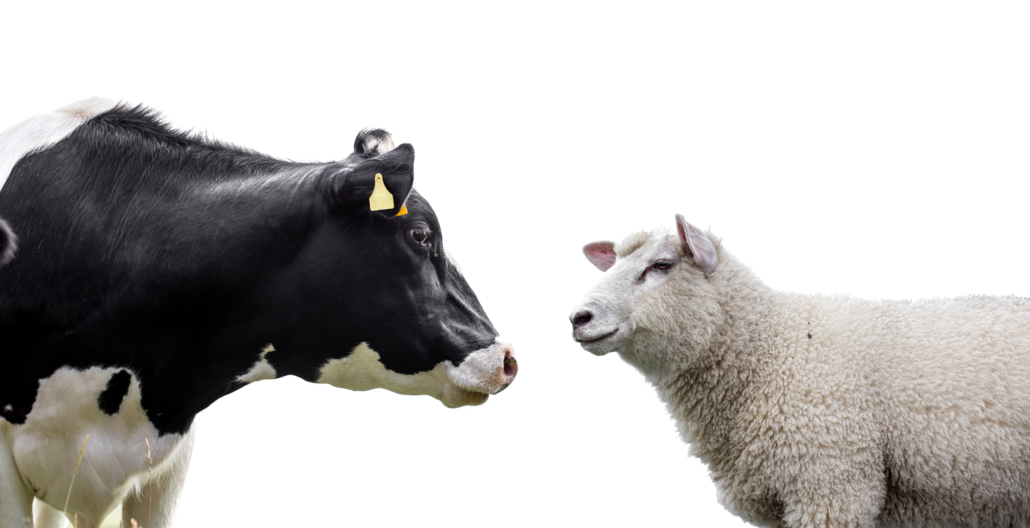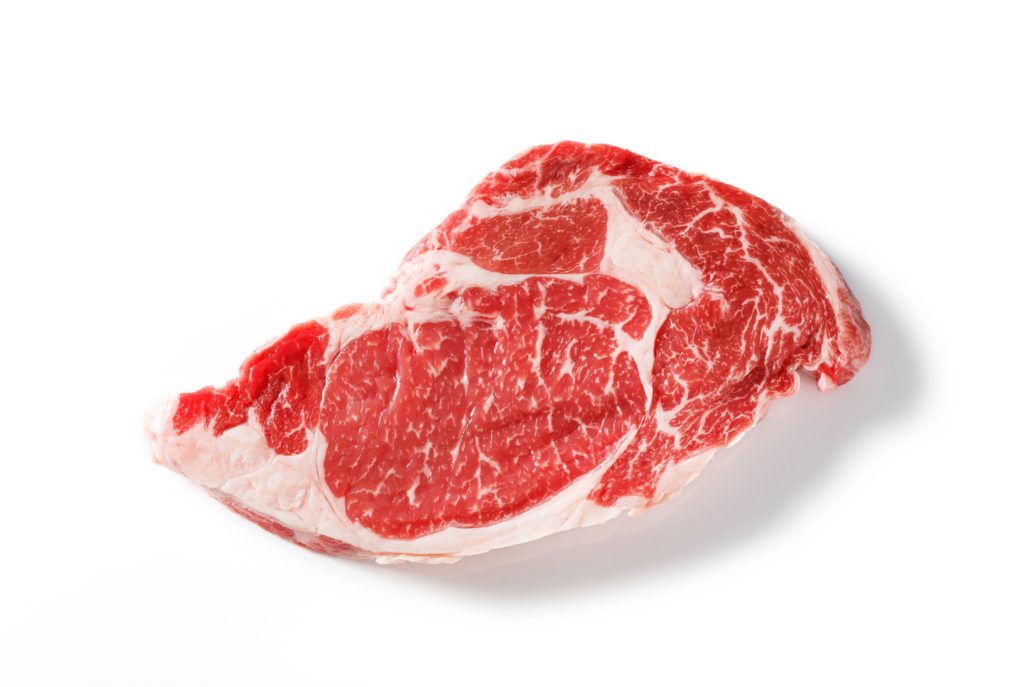We include products in articles we think are useful for our readers. If you buy products or services through links on our website, we may earn a small commission.
List of Red Meats and How They are Classified
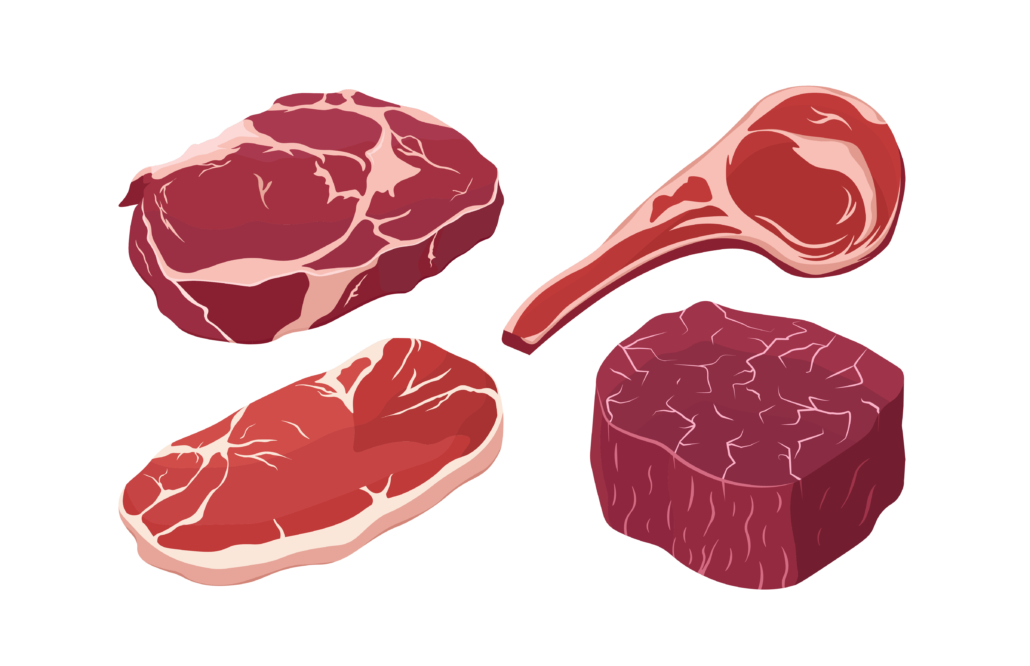
Much has been made about the distinction between red and white meat lists in both nutritional science and the culinary arts.
Since the 1960s, mainstream nutritionists have been trying and failing to causally link red meat with cancer and heart disease.
Meanwhile, renowned chefs have remained focused on acquiring quality cuts of red meat, cooking techniques, and wine pairing.
Despite the demonization of red meat, high-quality modern studies are setting red meat free from misinformation. Meanwhile, the chefs keep doing their delicious thing. As for the rest of us, we can now enjoy all the red meats on the list without guilt or worry.
In this article, we’ll explore what red meat is, provide a full red meat list with nutritional profiles, and offer a rundown of the new science debunking the anti-red meat dogma.
Table of Contents
What is Considered Red Meat
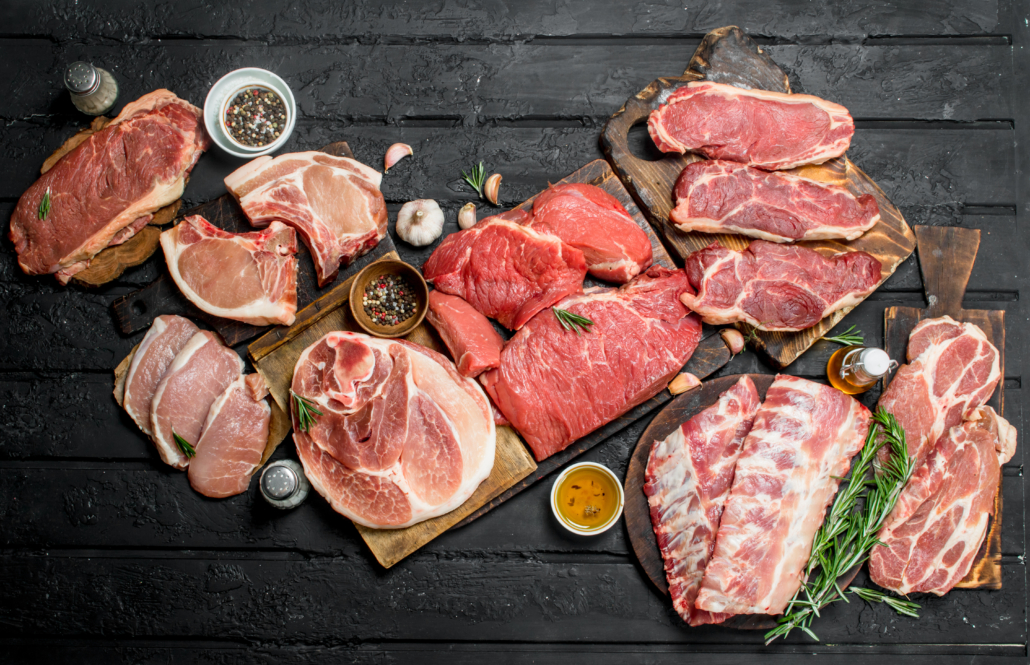
What is considered red meat depends in part on the field in which it is being considered–nutritional science, or gastronomy?
Let’s look at how each field makes its designations.
In gastronomy, red meat is commonly red when raw and has a dark color after it is cooked, in contrast to white meat, which is pale in color before and after cooking.[1][2]
Nutritional Science Classification of Red Meat
In nutritional science, red meat is routinely determined by its relative levels of myoglobin.
However, this is confusing and inconsistent. For instance, the dark meat of chicken or turkey has more myoglobin than most cuts of veal or pork.
The main designating organization is the United States Department of Agriculture (USDA).
According to the USDA, red meats include all meats from mammals. There is no distinction between cut or age.
It gets even more complicated when the National Pork Board–a subsidiary of the USDA promoted pork as “the other white meat” in an attempt to profit from the anti-red meat sentiment that itself had promoted.5
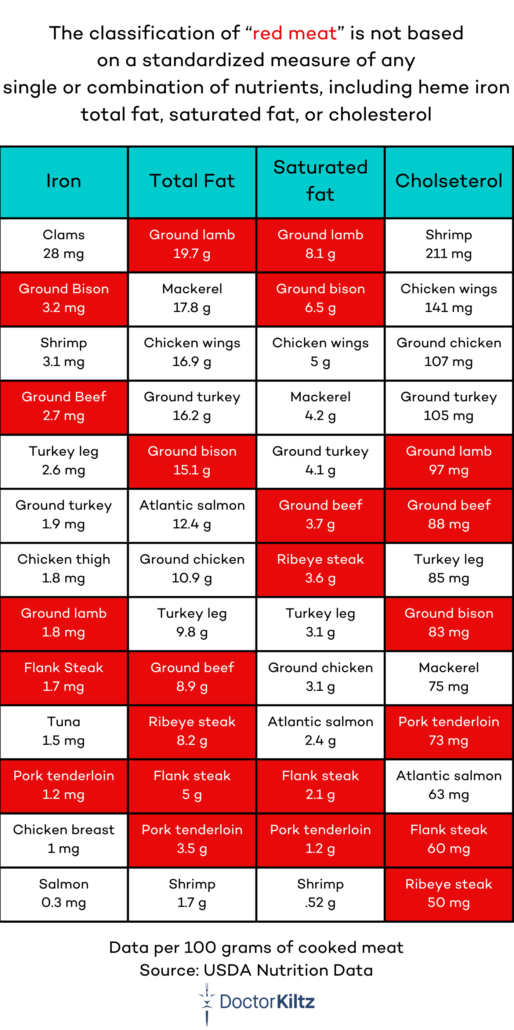
Source: Foodandnutrition.com
This arbitrary, contradictory, and confusing classification is consistent with how the USDA has treated meat since the 1960s.
For example, though there are recommendations against consuming red meat based on weak associations (not causation) between meat consumption and negative health outcomes, scientists have not identified any compounds specific to red meat that may be responsible for these correlations.
Furthermore, according to analysis of data from the “Health Professionals Follow-up Study” and “Nurses’ Health Study II,” people who eat the most red meat expose themselves to much greater lifestyle health risks. 45
They tend to move less, eat more junk food, smoke cigarettes and drink more alcohol. The fact that eating meat is more likely among people with other unhealthy lifestyle patterns is likely a result of bad press on red meat.
If you’re a health-conscious person who follows recommendations to exercise, eschew processed foods, and cut drinking or smoking, you’re also going to follow guidelines against red meat. Amidst all these factors, it would be irresponsible to single out red meat as a negative health factor–yet this is how it’s been done for decades.
Fortunately, this unscientific way of making recommendations is being challenged by modern researchers. Numerous high-quality studies are telling us that once-demonized cholesterol, saturated animal fats, and fresh red meat must be reconsidered as healthy and nutritious. More on this is below.
Nutritional Science Red Meat List
- Beef
- Veal (young cow)
- Bison/Buffalo
- Lamb (young sheep)
- Mutton (adult sheep)
- Pork (including sausages and bacon)
- Venison
- Goat
- Boar
- Elk
| Meat Type (100 g of meat) | Energy (kJ) | Protein (g) | Carbs (g) | Fat (g) |
| Pork Loin | 1,013 | 13.3 | 0 | 27.9 |
| Beef (Ground) | 1,033 | 17 | 0 | 19 |
| Veal | 741 | 20 | 0.1 | 10 |
| Lamb (Ground) | 1,180 | 17 | 0 | 23 |
| Goat | 456 | 21 | 0 | 2.3 |
| Duck (culinary) | 1,690 | 11 | 0 | 39 |
| Goose (culinary) | 1,662 | 16 | 0 | 34 |
| Wild Boar | 510 | 22 | 0 | 3.3 |
| Venison | 502 | 23 | 0 | 2.4 |
| Bison | 750 | 25.5 | 0 | 8.6 |
| Hare | 603 | 22 | 0 | 2.3 |
Culinary Classification of Red Meat

The culinary classification of red meat makes a bit more sense and takes into consideration the actual color of the meat itself. It also doesn’t pretend to be scientific and is open to debate.
Distinguishing between the age of the animal, gastronomy considers meat from adult mammals as red meat.
This includes beef, horse, mutton, venison, boar, and hare.
While young mammal meat including rabbit, veal, and lamb may be considered white meat along with poultry and fish.
Pork and duck are gray area meats. Most cuts of pork are considered red, but some are white. The same goes for duck. Both pork and duck can be paired with either white or red wine.
Culinary writers and chefs may classify red and white meat in contradictory ways.
Is Red Meat Healthy?
Red meat was first targeted in the 1960s for its saturated fat content based on the debunked “diet-heart hypothesis.” The idea was that saturated fat and cholesterol from red meat, eggs, and dairy was thought to increase the risk of heart disease.4
But as writers like Nina Teicholz in her bestselling The Big Fat Surprise: Why Butter, Meat & Cheese Belong in a Healthy Diet, point out, industrial vegetable oil companies like Proctor & Gamble (owners of Cisco) funneled millions of dollars into biased “research” attempting to replace meat and animal fats with their toxic products.
So what does modern, unbiased research tell us?
A bellwether 2020 systemic review (the scientific gold standard) concluded that eating unprocessed red meat is not associated with heart disease, “indicating that saturated fat content of meat is unlikely to be responsible for this association.” [6]
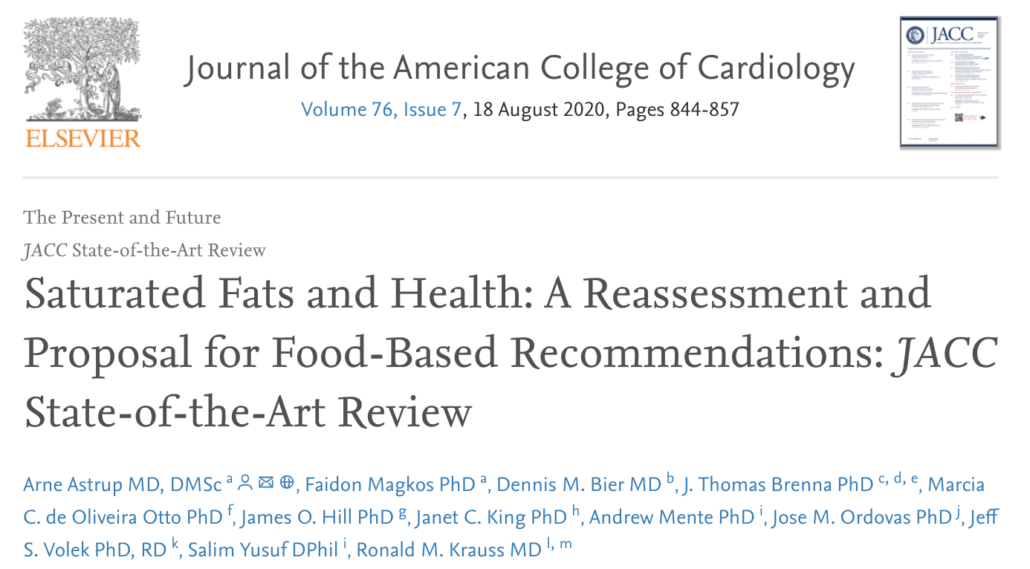
The study authors call on us to rethink red meat as a healthy whole food. They conclude “Whole-fat dairy, unprocessed meat, and dark chocolate are SFA-rich foods with a complex matrix (of nutrients) that are not associated with an increased risk of CVD. The totality of available evidence does not support further limiting the intake of such foods.”
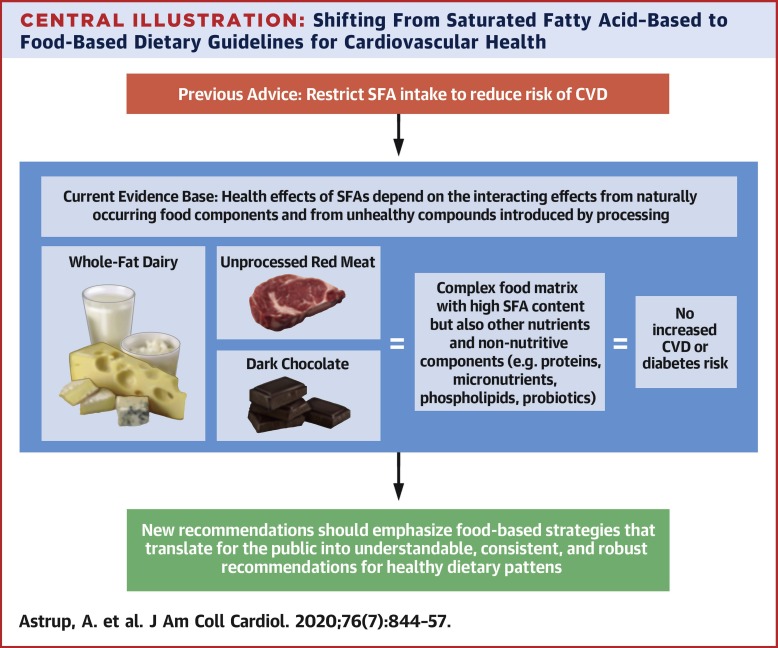
These findings are consistent with a major 2017 study published in the British Journal of Sports Medicen states that[1]
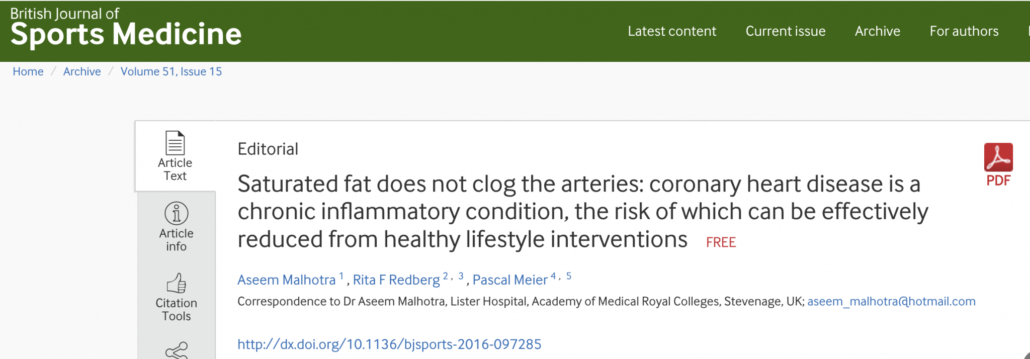
The researchers state that
- Coronary artery disease pathogenesis and treatment urgently requires a paradigm shift. Despite popular belief among doctors and the public, the conceptual model of dietary saturated fat clogging a pipe is just plain wrong.
- A landmark systematic review and meta-analysis of observational studies showed no association between saturated fat consumption and (1) all-cause mortality, (2) coronary heart disease (CHD), (3) CHD mortality, (4) ischaemic stroke or (5) type 2 diabetes in healthy adults.4
- Similarly, in the secondary prevention of CHD there is no benefit from reduced fat, including saturated fat, on myocardial infarction, cardiovascular or all-cause mortality.2
- In an angiographic study of postmenopausal women with CHD, greater intake of saturated fat was associated with less progression of atherosclerosis, whereas carbohydrate and polyunsaturated fat intake were associated with greater progression. [3]
Not only does eating saturated fat (from animal sources including red meat) not cause heart disease, it even protects the heart, especially when compared to carbs and PUFAs from vegetable oils.
Red Meat Does Not Cause Cancer
Red meat has also been targeted as a carcinogen. However, as with heart disease, there is exactly zero evidence linking fresh red meat with cancer.
But mainstream nutritional recommendations are only now catching up with the science. It is apparent that the hundreds of studies attempting to reveal a red meat/cancer link created enough suspicion to turn health officials against red meat.
But what does the science actually say?
That was the purpose of a landmark 2019 study called NutriRECS. As the most comprehensive research to date, researchers examined data from 48 studies with over 5.7 million participants. 3
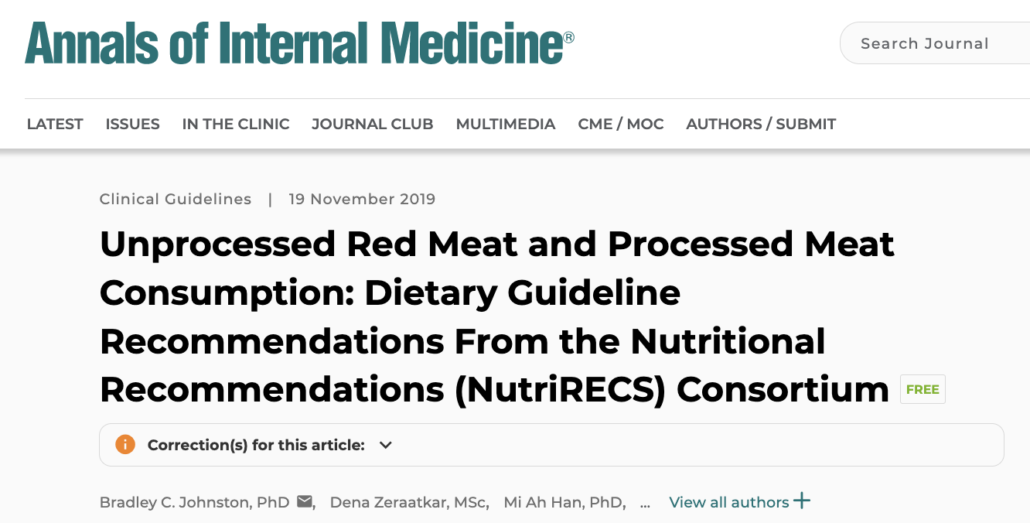
The researchers concluded that:
- The WHO and other public health organizations improperly use observational studies for their recommendations and without rigorous reviews of these studies
- Reducing fresh red meat has no impact on incidences of breast, colorectal, esophageal, gastric, pancreatic, and prostate cancer.
- There is “very weak” evidence that processed meat is associated with a very small absolute risk reduction in overall lifetime cancer mortality; prostate cancer mortality; and the incidence of esophageal, colorectal, and breast cancer, with no statistically significant differences in incidence or mortality for 12 additional cancer outcomes (colorectal, gastric, and pancreatic cancer mortality; overall, endometrial, gastric, hepatic, small intestinal, oral, ovarian, pancreatic, and prostate cancer incidence)”
Final recommendations: Contrary to the WHO, the researchers recommend continuing to eat both fresh red meat and processed meats.
For a more in-depth exploration of the questions of red meat and cancer, click here.
Red Meats List: The Takeaway
Identifying a standard red meat list is nearly impossible.
That’s because the fields of nutritional science and the culinary arts both use arbitrary and contradictory criteria to classify meat as red or white.
A basic rule of thumb is that if it’s a mammal, it is red meat, while poultry, fish, and seafood are considered white meat.
The bigger question is if the designation of red meat even matters when it comes to your health.
Though red meat has been targeted as responsible for heart diseases and cancers, modern studies tell us that these links have never been proven and that in fact, red meat is in fact, a highly nutritious part of a healthy diet.











